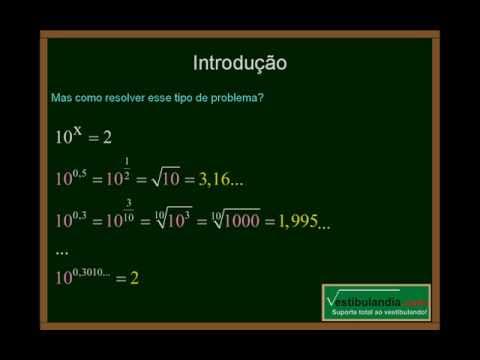lo 01
Summary
TLDRIn this educational video, viewers are introduced to the concept of learning objectives and the fundamentals of electrostatic fields. The script outlines the importance of understanding electrostatic principles, applying them to solve related problems, and analyzing to choose beneficial approaches. It covers topics such as electric charge, Coulomb's law, electric field calculations, and flux density. The video also touches on the historical context of these concepts, derived from Coulomb's experiments, and concludes with an exploration of electric flux, the density of the electric field, and Gauss's law. Practical applications and experiments are highlighted to engage learners.
Takeaways
- 📚 The lesson introduces the concept of learning objectives and aims to teach the principles of electrostatic fields.
- 🔬 Students will learn to describe, apply, and troubleshoot problems related to electrostatic fields, as well as analyze and choose beneficial approaches.
- ⚡ The first topic is about electric charges, including positive and negative charges, and how they interact with each other.
- 🧲 Coulomb's law will be discussed, which is essential for understanding the force between electric charges.
- 🔍 The continuous electric field derived from Coulomb's experiment is a key concept in the lesson.
- 📐 Calculations of the forces between charges, both attractive and repulsive, will be covered.
- 🌐 Understanding how to calculate the electric field is crucial for everyday applications.
- ⚡️ The concept of electric flux, its density, and Gauss's law will be explored, especially in the context of lightning and electric field strength.
- 🔬 The lesson will include various experiments to practice these concepts.
- 👩🔬 The instructor will guide through the experiments, with one focusing on the theoretical aspects and another on calculations.
Q & A
What is the main objective of the first lesson in the script?
-The main objective is to understand the principles of electric fields, apply them, and analyze problems related to electric fields to choose beneficial approaches.
What are the two types of electric charges mentioned in the script?
-The two types of electric charges mentioned are positive and negative charges.
What is Coulomb's law as discussed in the script?
-Coulomb's law is a principle that describes the interaction force between electric charges, which is used to determine the magnitude and direction of the force when positive and negative charges interact.
What is the relationship between Coulomb's law and the electric field?
-Coulomb's law is the foundation for understanding the continuous knowledge of electric fields, which arises from the experiments of Coulomb.
How does the script suggest calculating the force between electric charges?
-The script suggests calculating the force between electric charges by understanding the magnitude and direction of the force, which is influenced by the interaction between charges as per Coulomb's law.
What is the purpose of studying electric fields in everyday life as per the script?
-The purpose of studying electric fields is to understand and utilize the concept of electric fields in everyday life, which is a fundamental aspect of electricity.
What is the significance of Gauss's law in the context of the script?
-Gauss's law is significant as it helps in understanding the flux of electric fields and the intensity of the electric field, especially in situations like lightning where the concept of electric flux and its density is crucial.
What experiments are mentioned in the script that will help students practice?
-The script mentions various experiments that will be conducted to help students practice, including those related to Coulomb's law and the calculation of electric fields.
Who are the characters 'Phil' and 'Bell' mentioned in the script, and what is their role?
-Phil and Bell are characters in the script who will guide the students through the experiments and calculations, respectively, to enhance their understanding of the concepts discussed.
What is the importance of understanding the direction of the force between electric charges as discussed in the script?
-Understanding the direction of the force between electric charges is important because it helps in determining whether the force is attractive or repulsive, which is a fundamental concept in the study of electric fields.
Outlines

Dieser Bereich ist nur für Premium-Benutzer verfügbar. Bitte führen Sie ein Upgrade durch, um auf diesen Abschnitt zuzugreifen.
Upgrade durchführenMindmap

Dieser Bereich ist nur für Premium-Benutzer verfügbar. Bitte führen Sie ein Upgrade durch, um auf diesen Abschnitt zuzugreifen.
Upgrade durchführenKeywords

Dieser Bereich ist nur für Premium-Benutzer verfügbar. Bitte führen Sie ein Upgrade durch, um auf diesen Abschnitt zuzugreifen.
Upgrade durchführenHighlights

Dieser Bereich ist nur für Premium-Benutzer verfügbar. Bitte führen Sie ein Upgrade durch, um auf diesen Abschnitt zuzugreifen.
Upgrade durchführenTranscripts

Dieser Bereich ist nur für Premium-Benutzer verfügbar. Bitte führen Sie ein Upgrade durch, um auf diesen Abschnitt zuzugreifen.
Upgrade durchführenWeitere ähnliche Videos ansehen

Pahami Konsep Alur Tujuan Pembelajaran, ATP KURIKULUM MERDEKA

Matemática - Aula 13 - Logaritmo - Parte 1

61. Conductores-Todo lo que debes saber

Bab.ekosistem biologi kelas 10 komponen penyusun ekosistem

for+2 & 5th Semester CLASS | MOLECULAR BIOLOGY|Nucleic Acid,Nucleotide,Nucleoside|Pratikshya Mishra

AC Electrical Generator Basics - How electricity is generated
5.0 / 5 (0 votes)
